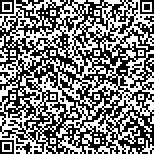下载中心
优秀审稿专家
优秀论文
相关链接
摘要

为了实现影像的自动化分割,提出一种利用非监督方式将观测数据采样化的遥感影像分割方法。该方法利用欧氏空间的概率分布建模采样数据和观测数据,并将其映射到黎曼空间,通过不断将观测数据转换为采样数据的方式实现影像的自动采样化。每次采样过程只需计算观测数据点到采样点的测地线距离,将距采样点测地线距离最小的观测数据转化为采样数据,以保证采样数据不断趋于该类数据的真实分割结果,同时使算法能够有效分割具有不同像素数的类别。将算法应用于模拟影像和真实遥感影像分割,对其分割结果以及传统基于统计、基于模糊的非监督算法和基于神经网络的监督算法相应分割结果定性定量的对比分析验证了该算法的有效性及可行性。
Image segmentation is a very common application in remote sensing, in which the number of classes is always given by users. To segment remote sensing images automatically, a sampling method which can transmit observed data into sample data is proposed based on the characteristics in Riemannian space. Therefore, this paper presents an unsupervised image segmentation algorithm which can automatically segment remote sensing images by sampling the detected data into samples.
First, model the initial samples obtained by block sampling or artificial sampling through Gaussian probability distribution function (pdf). Second, to take the neighborhood system of the detected image into consideration, Gaussian pdf is also employed to depict the features of the pixel and its correlation between neighbor pixels. Then both the samples and the detected image are mapped to the Riemannian space. In the Riemannian space, the similarity between the points expressing the detected image and the points standing for samples are measured by geodesic, which is the least distance on the curve surface of a manifold. The nearest points standing for the detected image to each sample are transmitted to samples and then the models of the samples are updated according to the new ones. By continually sampling, the models of the samples are tending to their real models, which represents the real segmentation through sampling the detected data. In each sample process, only the nearest detected data are transformed into sample data to make sure the presented algorithm can distinguish different classes with different number of pixels in it. Geodesic employed in this paper evaluates the differences between the detected model and the sample model to improve the accuracy of sampling.
The proposed algorithm is carried out on synthetic and real remote sensing images. Experiments on synthetic image shows the changes of samples both in the image and in feature space. Display of the sampling process demonstrate that the models characterizing each class trends to the real ones and the samples tends to the real data of each class in the feature space. Analysis on segmentation results of HMRF-CSA, GRM-FCM, neural network and the proposed algorithms on real remote sensing images validate the effectiveness of the proposed algorithm. The overall accuracy of the proposed algorithm can even reach to 98.9%, which is much higher than those of the compared algorithms.
Experiments on synthetic image show the models of samples can tends to real ones, which validate that the proposed sampling process is able to fit the real distributions of each class. Experimental results on real remote sensing images demonstrate that the effectiveness of sampling operation can distinguish classes with different number of pixels. Quantitative and qualitative analysis on the segmentation results show that the presented algorithm can segment remote sensing images accurately and quickly. Besides, the proposed algorithm can be used both as an unsupervised image segmentation algorithm to realize the segmentation of remote sensing images or as sampling process in supervised image segmentation algorithm to provide reliable sample results.

